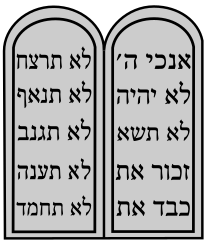I offer the following several paragraphs from my M.Div.Honours thesis concerning an essential aspect of the nature of theological interpretation:
The primary intent of Scripture (i.e., the theological intent) is normative for a proper interpretation that regards authorial intent with due respect. If the theological meaning and significance were excluded from one’s interpretation this would suggest that the reading of Scripture is not to be read as Scripture, but simply as objectified artifact.Certainly the Scriptures can be read in this manner with some benefit, but it fails to grapple with original intent. This “original intent” does not pertain to any fabricated attempt to get behind the text to an undocumented “original” of the text, but understands the text to offer its own implied author and audience. The implied author and audience are suggestive for how one should read the text. Any other manner of reading the text may be helpful in other studies, but is not ultimately helpful for reading the text as Scripture and therefore theologically. [1]
The failure to read Scripture theologically may in fact explain much of the maelstrom of debate surrounding Gen 1, specifically concerning the use of yôm. A theological reading understands there is more to be interpreted than simply one term in relation to other terms or in relation to genre, but also recognizes the grounding of any reading within the overall cultural, sociological and conceptual worldview as the text has been preserved. The context and genre provide the means by which one should arrive at any proper theological interpretation. It would seem that many fail to understand the importance of the theological intent of a given passage. This, more often than not, leads one to inadequately interpret the theological meaning of the passage and thus the intended theological significance of the passage. “When it comes to the Bible, the energy necessary to ‘hear clearly’ may be considerable, especially given the Bible’s ‘remove’ from the listener’s own language, literary traditions, and culture.” [2] In fact, the “ability to ask the proper questions presupposes that we come to the text with the proper expectations, and this in turn presupposes that we make an effort to bridge the spatio-temporal gap by developing, as best we can, an ancient linguistic-literary-cultural competence.” [3]
Related articles
- Beyond the Historical Grammatical Malaise (rickwadholmjr.wordpress.com)
- Reading Scripture Together (rickwadholmjr.wordpress.com)





